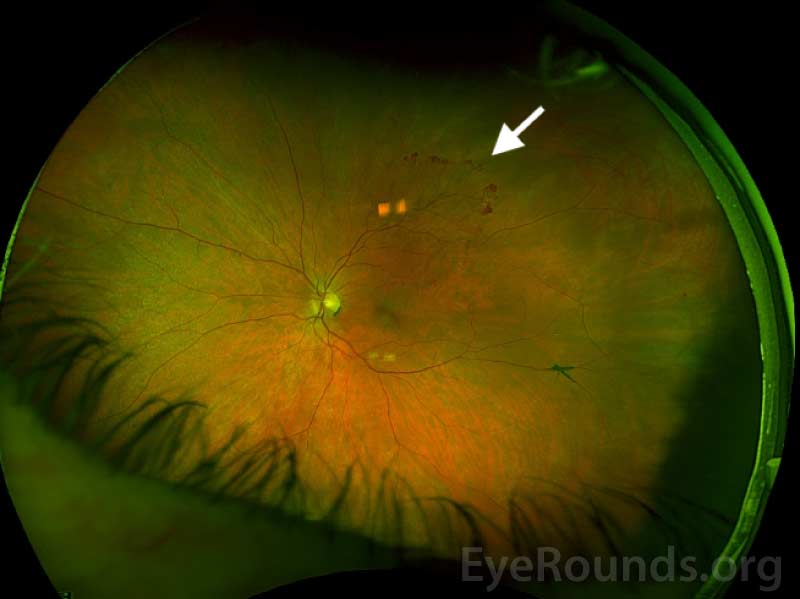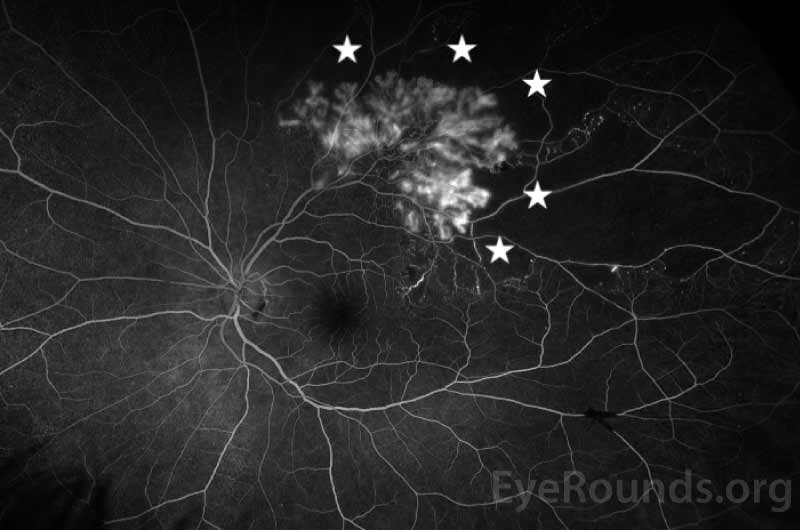
Classic sectoral hemorrhages are well-visualized in this case of Branched Retinal Vein Occlusion (BRVO). This condition is commonly associated with hypertension.
This series of images was obtained in a 69-year-old man who presented for a routine eye examination and reported a remote history of branch retinal vein occlusion (BRVO). He was asymptomatic with an uncorrected distance visual acuity of 20/20 in both eyes. On his initial examination he was noted to have a large area of peripheral neovascularization elsewhere (NVE). Scatter laser photocoagulation was applied to the large area of capillary non-perfusion anterior to the NVE in order to reduce the risk of hemorrhage.



Ophthalmic Atlas Images by EyeRounds.org, The University of Iowa are licensed under a Creative Commons Attribution-NonCommercial-NoDerivs 3.0 Unported License.